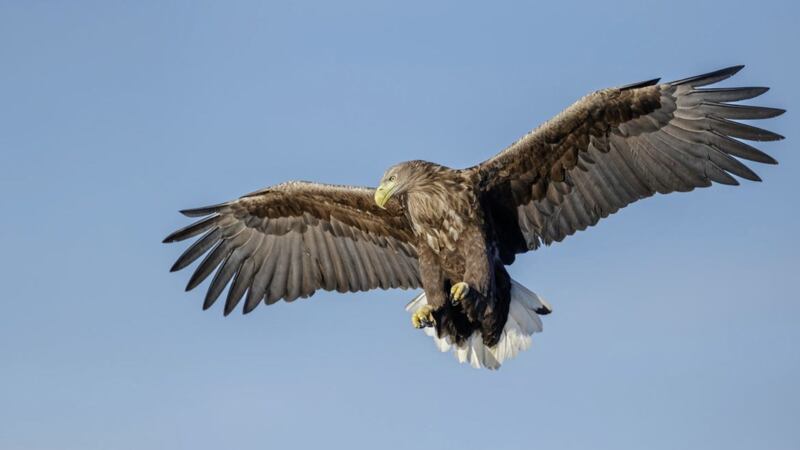MID-September sunshine brings a flurry of activity to my sedum plant. Clustered on tall fleshy stems, large flat heads of deepening pink flowers are smothered in tortoiseshell butterflies and bees, all enjoying final helpings of nectar before the chill of autumn calls time on summer's mirth.
Soaring high in the sky, young buzzards, soon to leave the security of their parents for territories of their own, also remind us of summer's end.
Seeing these raptors, I pondered on how intolerant human society has been of the hooked beak and sharp claw through the generations, something Irish botanist, Robert Lloyd Praeger referenced in his book The Way That I Went (1937).
Persecuted and driven to extinction in Ireland in the late 19th century, buzzards didn't appear here again until 1933 when breeding was confirmed on Rathlin Island (BirdWatch Ireland, Wings, 2011).
This recolonisation - the result of Scottish buzzards moving across - was short lived as the arrival of myxomatosis drastically reduced rabbit numbers, taking away their main source of prey.
By the 1960s the Irish population was again extinct but within 10 or 15 years further recolonisation occurred, and the buzzard began breeding again, slowly spreading throughout Ireland, where it is now common and widespread apart from some south-western counties.
Like other raptors their presence is a good indicator of a healthy environment. Top predators, buzzards eat a lot of carrion and keep hooded crow and magpie numbers in balance.
Their story of torment and extinction mirrors that of other birds of prey, like the golden and white-tailed sea eagles and the red kite, except these have required reintroduction programmes to encourage their return.
The golden eagle project is the longest running, with the first birds released in Glenveagh National Park in 2001.
Now 20 years on, many Irish-born golden eagles are in our skies, establishing their own territories. Although progress has been much slower than in the other two projects, the work to secure their long-term presence continues.
Years later the white-tailed eagle was reintroduced in Killarney National Park and the red kite in counties Down and Wicklow. Both birds are successfully establishing themselves as breeding species here again.
Setbacks continue to occur though for all four species, with individuals found poisoned over recent years, most notably the pernicious mass killing of 23 buzzards in Cork in late 2019, all of which had ingested the banned toxic substance carbofuran.
Returning to Praeger's work, the result of five years of weekends spent walking throughout Ireland, exploring, and recording its diversity, his comments on our birds of prey were prescient.
Noting the dwindling numbers and eventual extinction of both the golden and sea eagles due to persecution in the early 1900s, he wrote: ''One would like to hope that this is not the last that will be seen in Ireland of either of these grand creatures; but considering the reception that usually awaits them and others, it might be kinder to hope that neither eagle will again visit our country.''
Commenting on the "wise protection" of the golden eagle at the time in neighbouring Scotland, he concluded, ''but heaven help the bird that ventures near the 'Island of the Saints'.''
Ireland has also been called the island of 'a thousand welcomes', a title born of the significance afforded to hospitality in Ireland's ancient Brehon Laws. It is to be hoped that the ongoing work of the Golden Eagle Trust, led by the passionate and ever-patient Lorcán O'Toole, will continue to succeed and that here will become a truly welcoming place for these and other majestic raptors contemplating a return.








